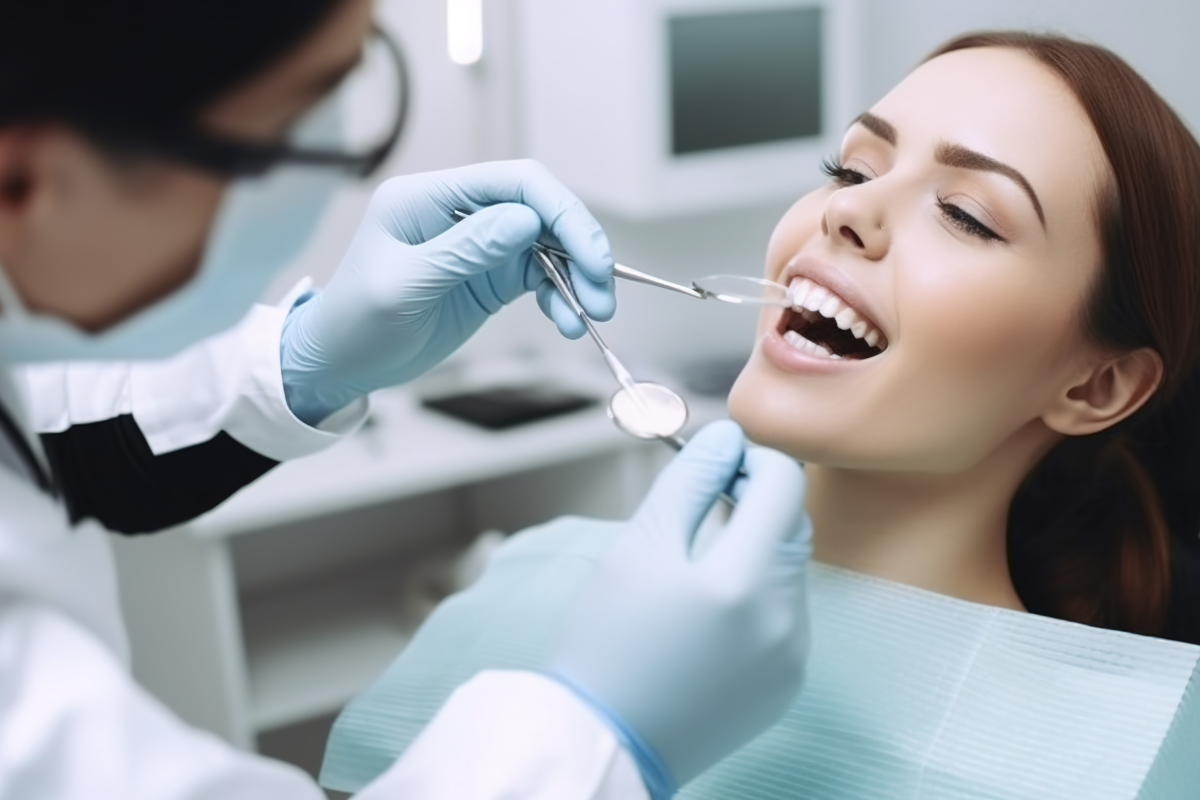How Do You Get Rid of Cavities?

| According to the National Institute of Dental and Craniofacial Research (NIH), 🥼nearly 90% of adults (20 to 64 years) have had tooth decay. 🦷 |
Every time you visit your dentist, you hear them telling you about brushing and flossing your teeth regularly. You may already be doing it, but still develop cavities at some point in your life. But it’s not the end of the world. Consult your dentist right away to get the best solution for cavities.
How Do You Get Cavities?
Cavities are the tiny holes on the hard surface of the teeth which appear when bacteria form a sticky film over the teeth known as plaque. Streptococcus mutans is the most common culprit behind it.
Plaque acids remove the minerals from tooth enamel, leading to erosion which is when you see the tiny holes. Cavities form when the acid damage spreads into the dentin layer beneath the enamel.
How Do Dentists Diagnose Cavities?
Your dentist can detect cavities by:
- Asking about tooth sensitivity and pain
- Examining your mouth/teeth
- Examining the hard-to-reach corners of your mouth with dental tools
- Reviewing your dental X-ray that can show the extent of your cavities
| Get affordable dental care and treatment for your cavities. Book a consultation. |
How Do You Treat Cavities?
Regular dental checkups help identify all dental issues, including cavities, before they advance and cause more significant problems.
Early detection of cavities can prevent you from landing in a grave situation and requiring more extensive treatment.
Cavity treatment depends on the severity of the situation. The options include:
1. Fluoride treatment for early stages: Getting fluoride treatment is a good call when your cavities are at the earliest stage, as it can help restore your tooth’s enamel and even reverse it!
2. Filling, or restoration, for progressed stages: It is the one treatment option for progressed cavities. Doctors use various materials, like tooth-colored composite resin and porcelain, for fillings.
3. Crowns for extensive decay: They are custom-fitted coverings to replace your entire natural teeth crown. Dentist drills away all the decayed parts of the teeth to ensure the proper fit of the crown, made from gold, high-strength resin, porcelain, or other materials.
4. Root canal when decay reaches the pulp: Once there’s a root cavity, meaning it reaches the inner material of your tooth, known as the pulp, your dentist suggests a root canal. They remove the affected pulp, sometimes add medicine to remove the infection, and then replace it with a filling.
5. Extraction when the damage is extreme: Restoration for severely decayed teeth becomes difficult, with extraction being the only option. But it leaves a gap, allowing other teeth to shift. Consider getting dental implants or a bridge to replace the missing teeth.
How Do You Get Rid of Cavities at Home?
Several home treatments, based off of a study, suggest lack of vitamin D in the diet causes cavities.
Not getting ample vitamin D can make teeth more vulnerable to cavities, but that’s one part of the problem. A few other factors include:
- Xerostomia, a.k.a dry mouth
- Consuming food like candies that stick to teeth
- Frequent snacking on sugary foods
- Heartburn (acidity)
Try these home remedies:
- Chewing sugar-free gum after meals has been shown to help remineralize enamel. Xylitol chewing gums stimulate saliva flow, boost plaque pH, and lower S. mutans. Sugar-free chewing gums with casein phosphopeptide-amorphous calcium phosphate (CPP-ACP) are even more effective than xylitol chewing gums.
- Vitamin D absorbs calcium and phosphate from the food you eat. It affects your oral health. So consider taking vitamin D supplements. Dairy products like yogurt and milk are also sources of this vitamin.
- Use fluoride toothpaste. As mentioned above, fluoride remineralizes enamel and helps prevent cavities.
- Reduce the consumption of sugary foods and drinks. Sugar is one of the biggest factors causing cavities. Cutting it out completely out of the diet is difficult, so avoid snacking throughout the day. It gives your teeth enamel a chance to remineralize.
- Try the ancient practice of oil pulling. It involves swishing around an oil like sesame or coconut, in your mouth for almost twenty minutes and then spitting it out. A clinical trial shows that sesame oil reduced gingivitis, plaque, and other bacteria in the mouth similar to chlorhexidine mouthwash.
- Use licorice root extract. The Chinese licorice plant can help combat the bacteria that cause cavities. A researcher has even created a licorice lollipop for this.
The Final Words
The home remedies we’ve listed won’t help get rid of existing cavities. That’s why, it is best you consult your dentist right away. It can help prevent any further damage and other dental problems that come along when you avoid getting help.
Genuine Dental is one of the practices you can trust, where dentistry is done differently. The staff here makes sure you are comfortable throughout your journey and does its best to give you the best experience possible. Get in touch for a consultation.